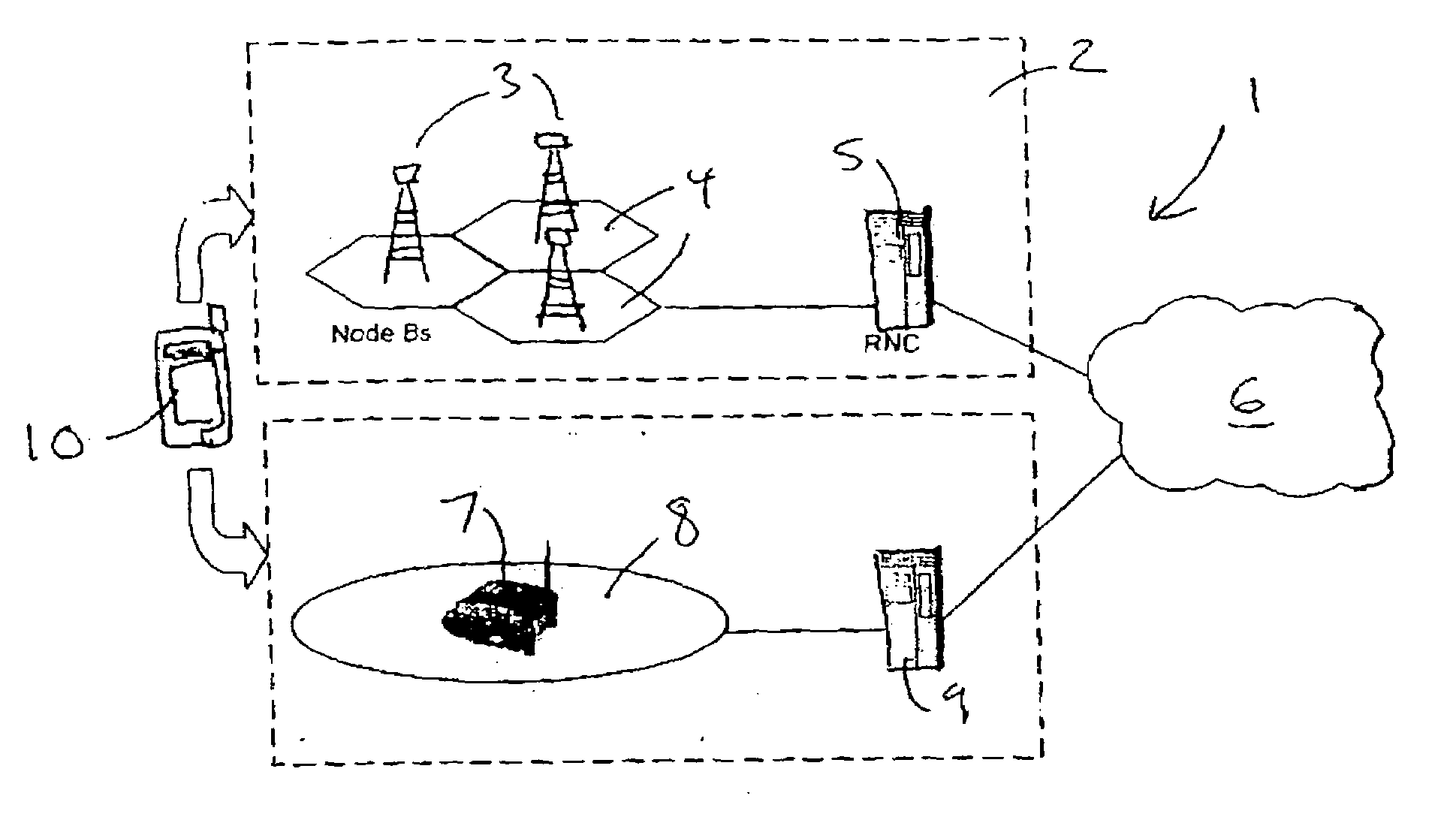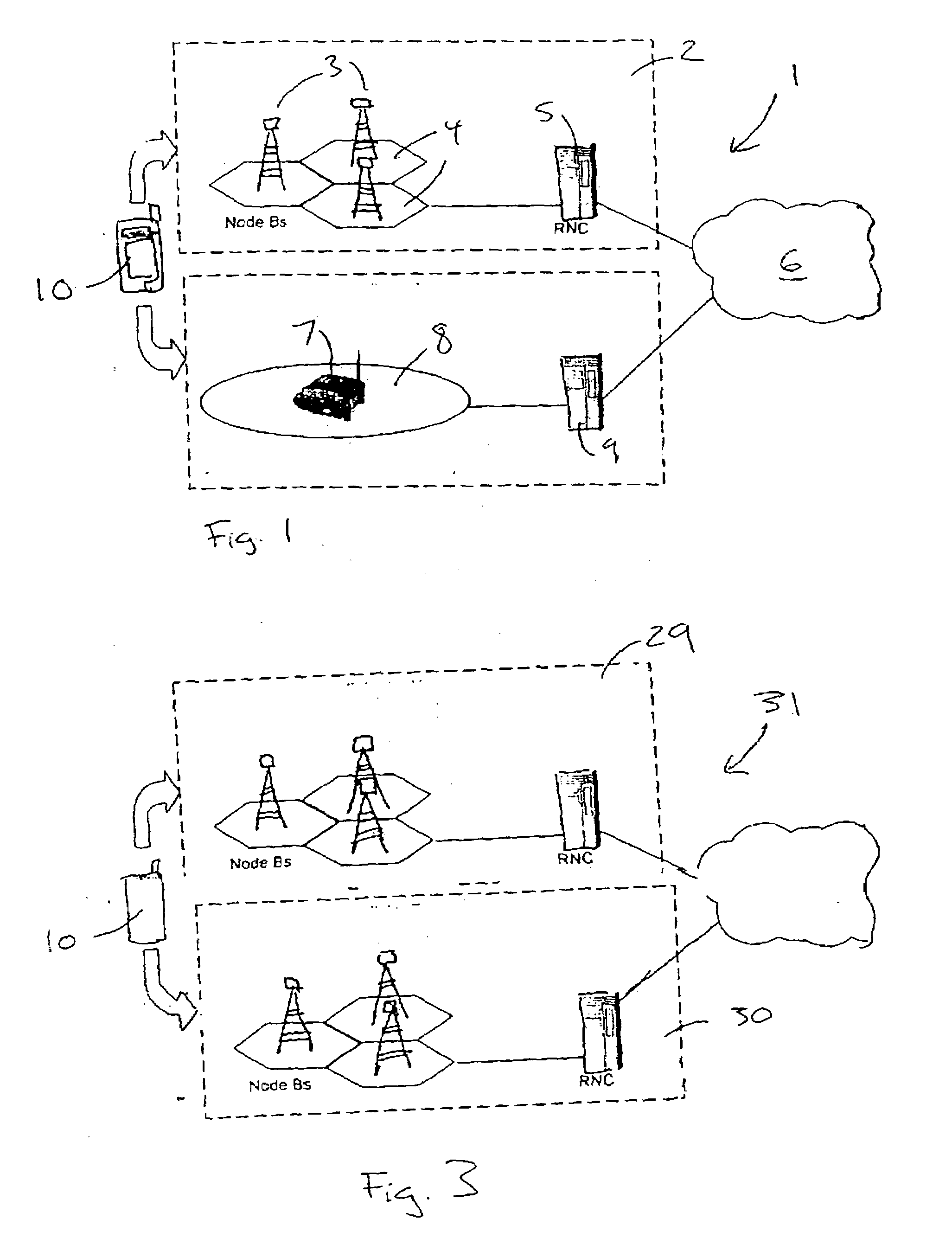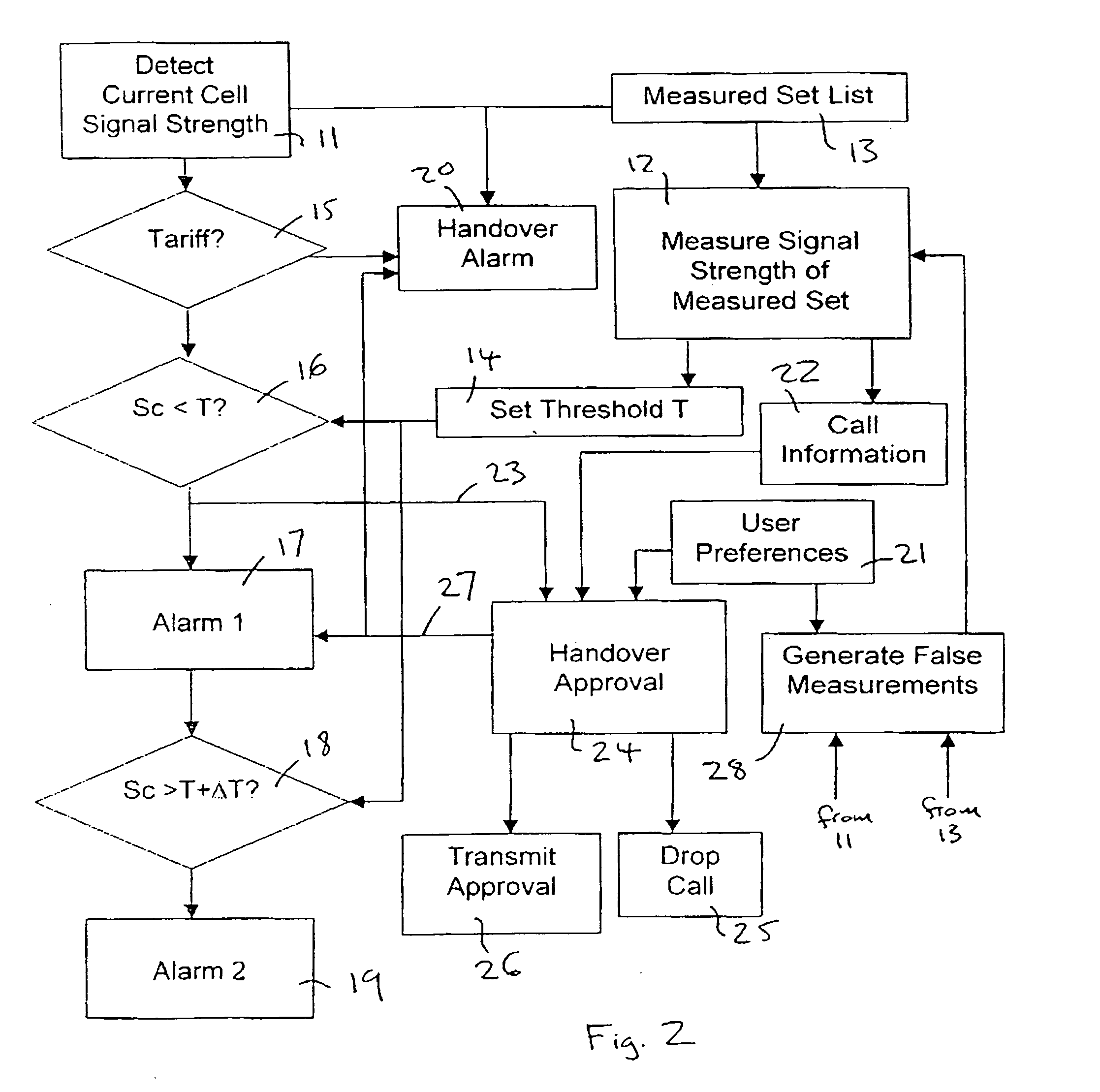[0007]According to an aspect of the invention, a method of administering call handover between cells in a communications
system includes the step of: permitting a user of a device that communicates with the
system to determine if call handover should be performed. Thus, while the
system makes a decision as to whether or not handover is necessary for optimum
network performance, the user is given an opportunity to decide if such a handover should actually be performed. This is particularly advantageous where a handover, if implemented, would result in an increase in the call tariff during an on-going call. This might arise where a connection is initiated with a home cell, at a lower rate, and then
signal conditions change. For example, a user may be is currently listening to streaming radio on a terminal at home using the
overlay home cell, where the cost of doing so would be minimal. An unexpected handover, from the user's point of view, to the underlay cell can occur due to changes in channel conditions during that session. For example, the user might move away from his home BSR or access point, or move next to a window. Previously, this may have lead to what, to the user, would be a seamless transition, with handover being automatically implemented by a network controller. The handover may incur unanticipated higher underlay network tariff charges for the user. By using the invention, in one method, the user avoids the uncertainty experienced due to changes in pricing tariffs in the event of an
overlay to underlay handover. This may remove a disincentive for the user to make use of certain functionalities and services available to him. It provides the user with assurance that the expected pricing tariff is used.
[0009]The invention is particularly useful where differential tariffs are involved, but it may also be implemented in others situations. For example, it may enable the user to retain control of the connection
route so as to ensure a communication session is not transferred away from what would be a generally more reliable connection to a less desirable one.
[0010]The device, also termed herein a user terminal, may be a mobile terminal such as a
cellular telephone or a
laptop computer, or could be a fixed device. Although a fixed device may be less likely to experience handover because there is less likelihood of relative movement between it and a cell of a communications system, changing environmental conditions or
transmitter performance, for example, could cause a handover to occur.
[0011]In one method in accordance with the invention, the steps are included of: detecting when there is an
increased risk of handover of a call; and alerting the user when an
increased risk is detected. This might be done by the
user device emitting a
warning tone or alarm, or by vibration, or by a message on a visible display, for example. Advantageously, the user is warned in a way that does not interrupt the call. The user may then be able to take appropriate action to reduce the risk of handover occurring, for example, by moving closer to the BSR or access point where the communications session is being conducted via a home overlay cell. An example of
increased risk of a handover is when the
signal received from the BSR drops to within a predetermined range that is close to the handover threshold. Where an alert has been given, a follow up
signal might be given where the increased risk of handover has diminished in response to the user's action, for example. If avoiding action is not taken or is not successful in preventing handover, another alert might be given by the user's device to inform him of handover, so he may choose to terminate the call or make another effort to re-establish the connection via the desired
route, which normally would be the one with a cheaper tariff The user may be given the option of choosing which of these alerts are to be implemented and their characteristics. Also, the user may be given the capability of selecting only to be warned for communications of a certain type where handover is an increased risk. For example, a handover might not be significant for a particular user if he is engaged in a voice call, but he may wish to be made aware if occupied with a data session.
[0012]In another method in accordance with the invention, the step is included of obtaining agreement of the user in order to initiate handover. A user may be given notification and prompted for a decision on what action to take prior to an overlay home cell to an underlay cell handover, for example. Thus, if a handover is imminent, users could be given the choice of approving the handover and continuing with the higher tariff, or dropping the session to avoid higher tariffs. This approval process may be implemented as a stand-alone feature existing only on the user terminal, or as a network feature. Implementation as a network feature allows a more formal recording of user's handover approvals for legal purposes.
 Login to View More
Login to View More  Login to View More
Login to View More 


